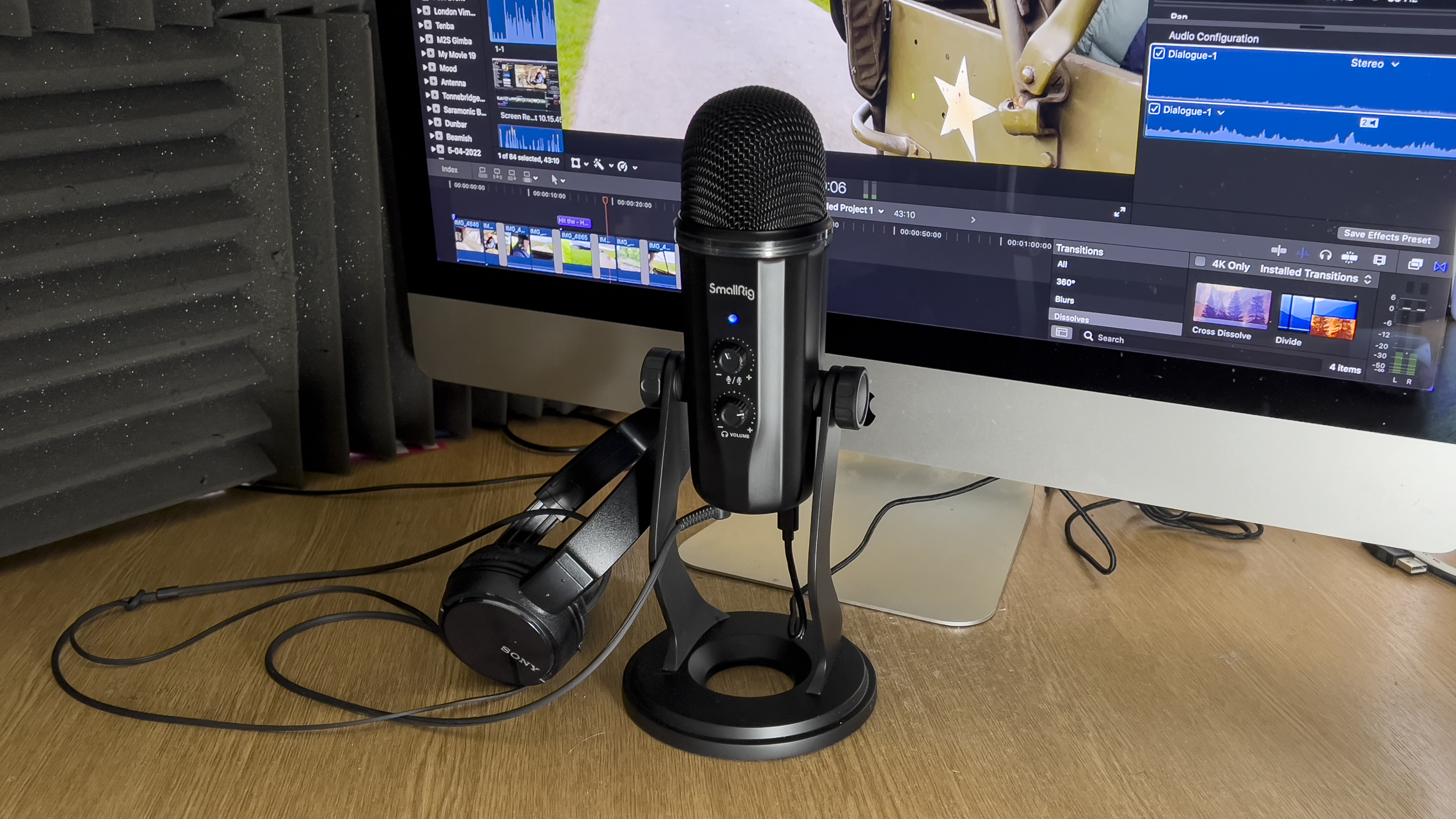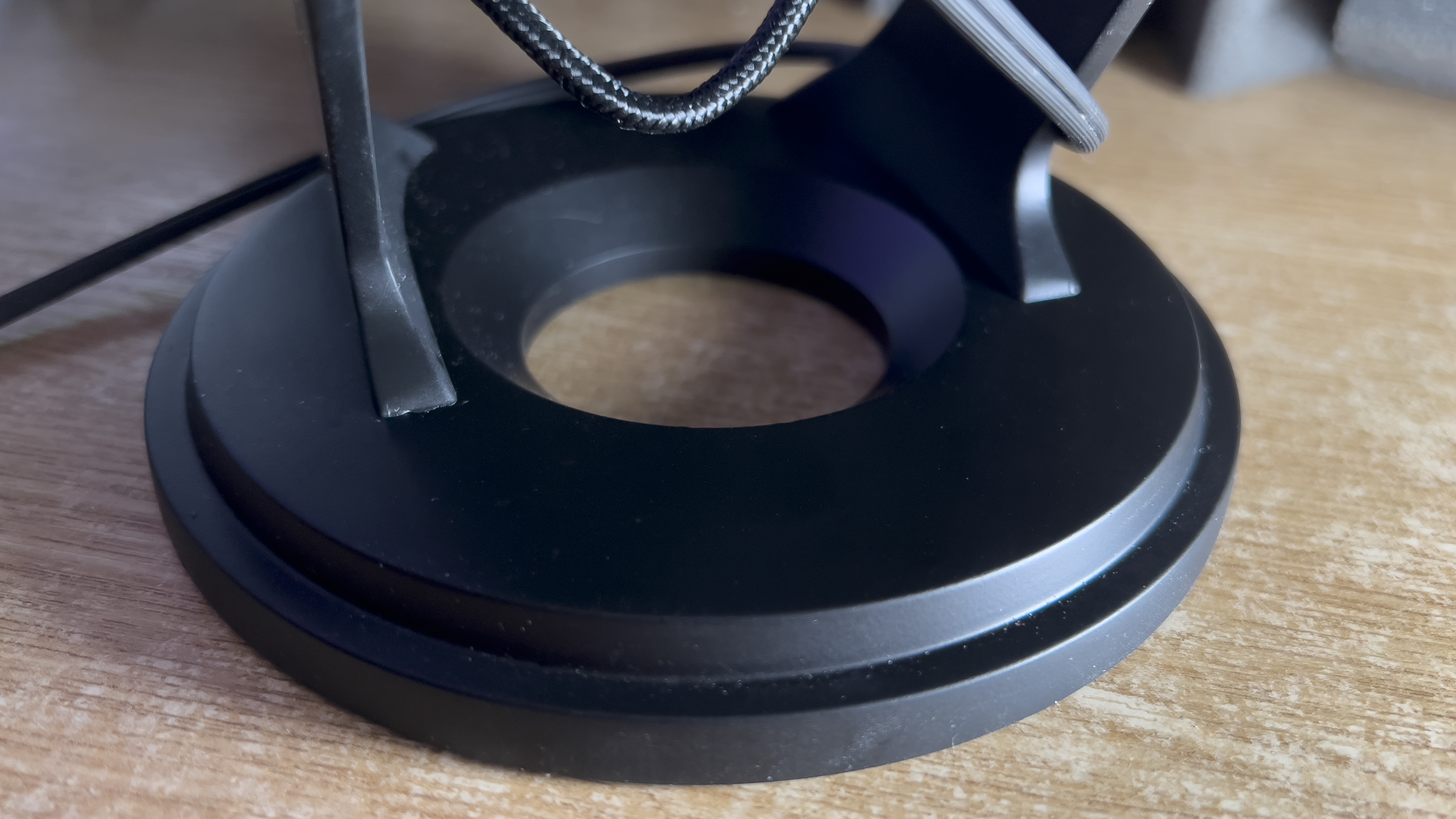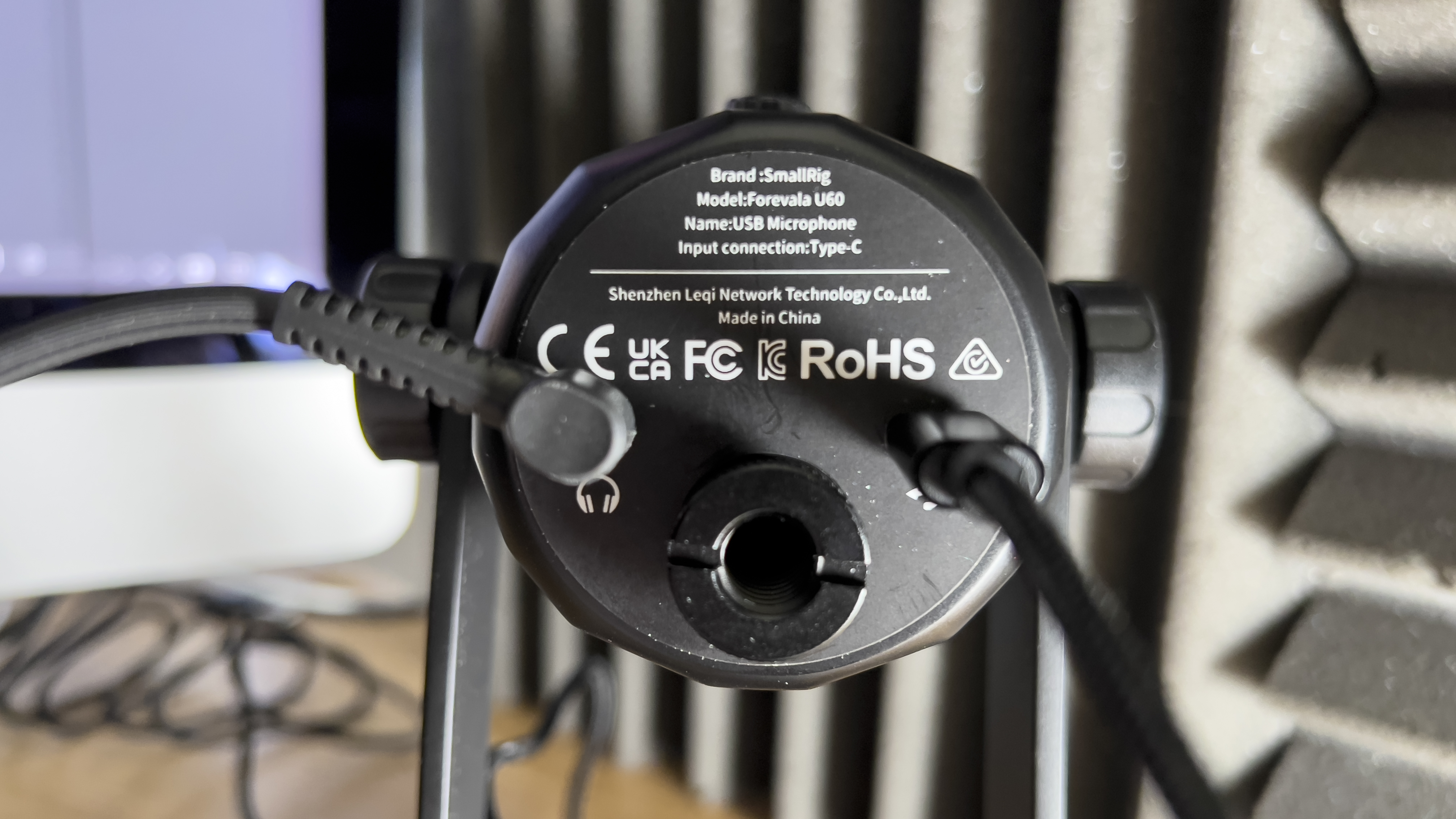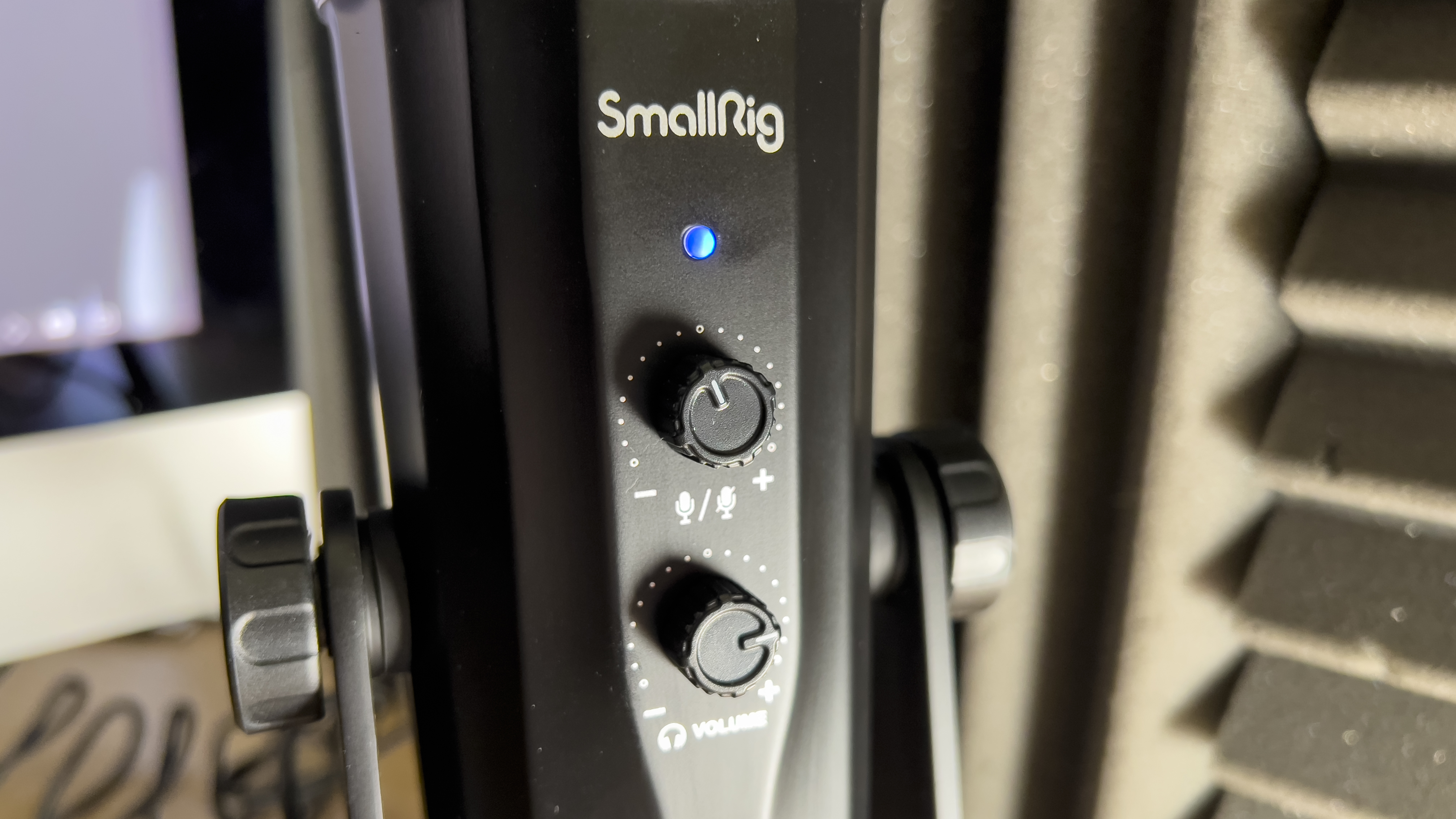Digital Camera World Verdict
This budget USB mic is a strong contender for a place on your desktop thanks to a solid metal build, multiple polar patterns and the ability to record high-quality audio. Foam padding on the base and arms helps dampen noise-inducing vibrations from other devices on your desktop. It will certainly elevate the production values of your sound recordings to a higher level.
Pros
- +
Solid metal build
- +
Built-in headphone monitor socket
- +
2 in 1 cable for easy connection
- +
Multiple polar patterns
Cons
- -
Slightly ‘thin' audio
Why you can trust Digital Camera World
The SmallRig Forevala U60 is designed for desktop audio recording. Your smartphone, laptop or PC are capable of recording audio though their built-in mics but the sound will be relatively poor compared to audio captured from a dedicated USB capsule mic.
There are plenty of plug and play USB desktop microphones already crowding the market, but the SmallRig Forevala U60 is well worth a look if you’ve yet to buy a mic to improve the audio quality of your home studio.
At $89 (or around £80) the U60 is competitively priced, especially when compared with the popular (but more expensive) Blue Yeti mic that has a similar build and almost identical functions. In fact the U60 has a price that’s similar to the budget JOBY Wavo POD USB mic, but the U60 has a reassuringly solid aluminium build compared to the Wavo POD’s plastic body.
Specifications
Dimensions: 292.2 x 125.9 x 125.9 mm
Weight: 1.08 Kg
Materials: Aluminium and Zinc Alloy
Polar patterns: Stereo, Omni-Directional, Cardioid, Bi-Directional
Sample rate/Bit depth: 48 kHz/24-bit
Sensitivity: -38 dB
Key features


As with most capsule USB mics, the Forevala U60 has an input level knob that you can adjust to capture a healthy (but non-distorted) sound level. If you’re using the mic for a live event you can press the input knob to mute it when required. A helpful LED changes from blue when active to red when on mute. An additional headphone socket enables you to monitor the sound coming into the mic, but you’re probably more likely to monitor the sound on your recording device (such as a Mac or PC).
A polar pattern knob enables you to make the mic sensitive to sound coming from specific directions. For example, the Cardiod pattern is the best setting for one person talking to the mic as it doesn’t pick up noise from the sides or the rear of the U60. This helps you record a clean voiceover without capturing the whir of your PC’s fan or voice echoes bouncing off nearby walls.
You can set the polar pattern to suit other recording set ups. If you want to interview someone then the Bi-directional setting will record voices from the front and rear of the mic (but will ignore sound from its sides). To capture a room full of people you can use Omni-directional (but this will pick up lots of unwanted ambient noise as well.). As you’ll see from our test video a few acoustic treatment tiles stuck onto bits of card can be deployed around the mic to absorb ambient noise such as echoes and create a cleaner sound. You can pick up acoustic treatment tiles from Amazon.
Build and handling



The U60 is a solid mic, composed of aluminium and zinc alloy. It’s also jet black and looks great on your desktop. Adjustable handle knobs enable you to tilt the mic, though in most cases it should remain vertical to capture your voices from the front or back. There’s also a threaded port at the base of the mic that has an adaptor so you can attach it to a microphone boom for example.
Desktop mics can pick up vibrations from other equipment (such as your PC or external drives), which can lead to hum in the recordings. A high density sponge base helps reduce vibration-induced noise, as do silicone pads that attach the mic to the stand.
Performance
Watch the video (above).
The U60’s built-in sound card enhances stereo and spatial audio and helps keep latency at bay, so there’s no delay between your lip movements and the sound being captured by the mic. It also captures dual-channel sound at 48 kHz/24-bit, which facilitates high-fidelity sound recordings.
We found the captured audio sounded clear and sharp, but it was a little on the ‘thin’ side. A small EQ bass boost in Final Cut Pro was all it took to give the audio a richer, fuller sound, as you’ll hear from our test video.
Verdict
The Forevala U60 USB mic will considerably improve the quality of your sound recordings (compared to the tinny and echoey audio that you’ll capture with your PC’s built-in mic).
For a budget mic it has a solid metal build and the braided audio cable that connects it to your devices is of better quality than the plastic cables that ship with the Blue Yeti or the JOBY Wavo POD. The sound is crisp and clear but it will benefit from a little bass boost in a post-production app such as Final Cut Pro or Premiere Pro.
Read more:
George has been freelancing as a photo fixing and creative tutorial writer since 2002, working for award winning titles such as Digital Camera, PhotoPlus, N-Photo and Practical Photoshop. He's expert in communicating the ins and outs of Photoshop and Lightroom, as well as producing video production tutorials on Final Cut Pro and iMovie for magazines such as iCreate and Mac Format. He also produces regular and exclusive Photoshop CC tutorials for his YouTube channel.


